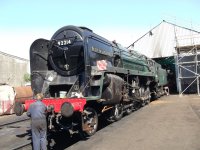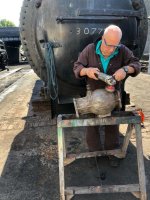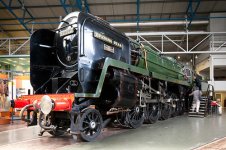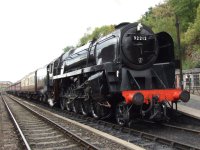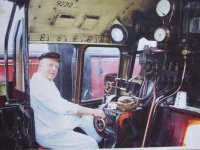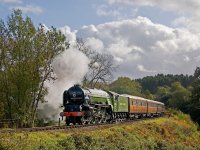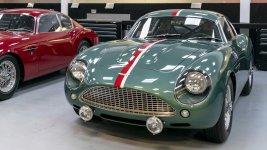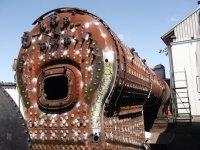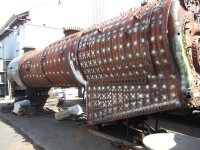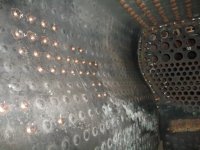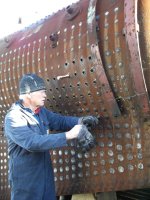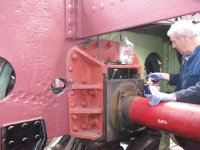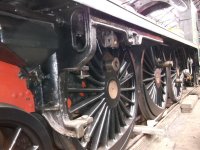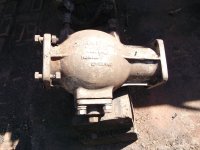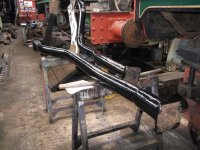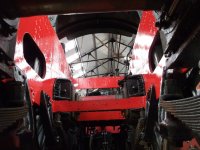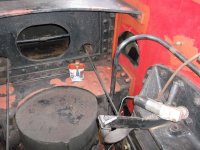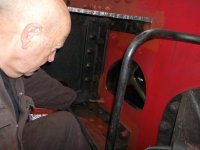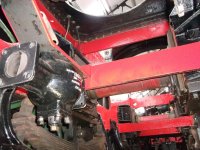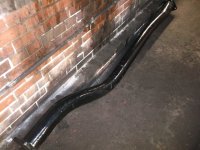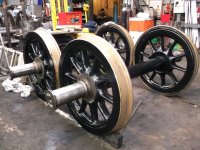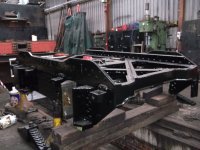Chuffer
CCCUK Member
It`s been a while since an update on 30477 `Sir Lamiel ` overhaul update . Mostly because there have been weeks and weeks of mundane needle gunning of more of the internal surfaces of the frames and then the numerous spokes on 3 pairs of 6 foot 7 inch diameter driving wheels and slapping a good coat of primer on . Progress as also been hampered by having contractors on site setting up to renew the loco workshops roof and electricians upgrading the electrical installations which has necessitated moving things about a lot . The tender which is of the twin 4 wheeled bogie type generally referred to as a water cart type rather than the much more common rigid wheel base 6 wheeled tenders used on nearly all British built steam locos is now ready for lifting so that the 8 wheel sets and axle boxes can be dropped out and rolled away for inspection and refurbishing as necessary . Recent work has been removing the heavy horn tie castings that bolt across the phospher bronze faced horns that the axles boxes slide up and down under leaf springs . The ties prevent the axle boxes from falling out the horns .
The ties have been sand blasted and painted in primer and a start made on the first coats of undercoat . I nice job out in yesterdays blazing sun !!
Another job in progress is the steam cleaning of years of thick oil sludge that has built up in the exhaust steam feed pipes and the oil seperator that traps the oil sludge before it can get into the exhaust steam injector that feeds water from the tender into the boiler . A locomotive has two injectors to feed the boiler , one a `live ` steam injector powered by clean steam straight from the boiler and the other being an `exhaust ` steam powered injector . The exhaust steam injector has the advantage of using steam that has already done its job of powering the pistons rather than robbing the boiler of fresh steam that is neaded to powere the loco . Thus the demand on the steam making capabilty of the boiler is reduced making it more ecomical on water and hence coal . I will cover how the oil gets into the steam in a seperate post but suffice to say it has an unlikely link with the famous home of US car manfucturing - Motown !
Photos show the horn ties , exhaust steam pipes and the oil seperator being linished before getting a coat of primer on , and the water cart on the jacks ready for lifting .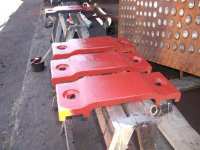
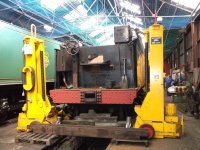
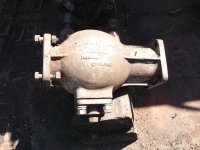
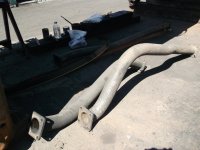
The ties have been sand blasted and painted in primer and a start made on the first coats of undercoat . I nice job out in yesterdays blazing sun !!
Another job in progress is the steam cleaning of years of thick oil sludge that has built up in the exhaust steam feed pipes and the oil seperator that traps the oil sludge before it can get into the exhaust steam injector that feeds water from the tender into the boiler . A locomotive has two injectors to feed the boiler , one a `live ` steam injector powered by clean steam straight from the boiler and the other being an `exhaust ` steam powered injector . The exhaust steam injector has the advantage of using steam that has already done its job of powering the pistons rather than robbing the boiler of fresh steam that is neaded to powere the loco . Thus the demand on the steam making capabilty of the boiler is reduced making it more ecomical on water and hence coal . I will cover how the oil gets into the steam in a seperate post but suffice to say it has an unlikely link with the famous home of US car manfucturing - Motown !
Photos show the horn ties , exhaust steam pipes and the oil seperator being linished before getting a coat of primer on , and the water cart on the jacks ready for lifting .





